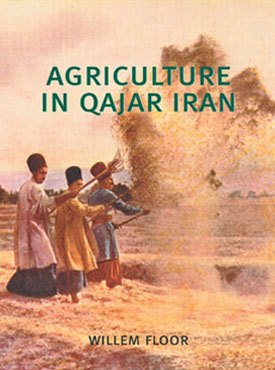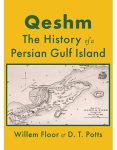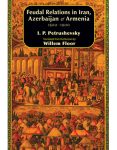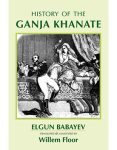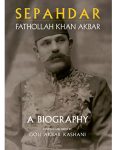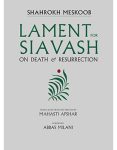About the Book
AGRICULTURE was the mainstay of Iran’s economy in the nineteenth century, yet little is known about it. Historians have rarely taken that important reality into account when writing on the economic or social history of that period, and until now there have been no comprehensive studies of Iranian agriculture. Now, in Agriculture in Qajar Iran, renowned scholar Willem Floor has compiled an all-encompassing analysis of nineteenth-century Iranian agriculture based on extensive research into previously untapped Persian and European archives. Floor presents farming in Iran from the ground up and in its every dimension. His investigation covers farming methods like irrigation and seeding, the raising of livestock, and the range of crops cultivated, from wheat, barley, and rice, to the more notorious cash crops of tobacco and opium. Floor also delves into methods of forestry and fishing, subjects about which very little is known and even less has been written, until now.
Agriculture in Qajar Iran traces the commercialization of Iranian farming, and explains how this process altered the structure of Iran’s economy. The change included the rise in cash crops, the growth of wage labor, the rise in off-farm employment, and the market economy’s growing influence in the countryside. Floor also highlights the importance of trade within this burgeoning system, and gauges the impact of the commercialization of agriculture on the rural population’s socioeconomic status.
Agriculture in Qajar Iran presents fascinating accounts of just how the Iranian peasantry lived, vivid stories of what they ate, how they dressed, and whether or not the new agricultural order enriched or impoverished their lives. The study is richly illustrated with photographs and drawings from the period which illuminate and enliven Floor’s subjects. Because of the enormous impact the agricultural sector had on the welfare of the entire nation, rich and poor, and on the social and cultural, as well as on the economic life of the country, Agriculture in Qajar Iran is a must-read for those interested in the history of Iran, and rural sociology, international trade, and development economics.
Excerpt
- Preface
- Commercialization Of The Agricultural Sector
- Chapter 1: Did The Qajar Economy Grow Or Stagnate? / Chapter 2: Structural Changes In The Agricultural Sector
- The Lay Of The Land
- Chapter 3: Geography, Soils, Climate / Chapter 4: Urban-Rural Interlinkage
- Nature Of Society And Economy
- Chapter 5: Pattern And Changes In Landownership: Landownership, Share-Cropping, Fixed-Rent, Labor-Rent / Chapter 6: Village Organization And Its Officials: Kadkhoda, Pakar, Mirab, Mobasher / Chapter 7: Position Of The Peasants: Land Tenure, Ra`Yat; Khoshneshin; Wage Labor; Village Artisans, Gypsies; Slaves; Gender; Nomad Stratification; Freedom To Move; Indebtedness / Chapter 8: Non-Sedentary Rural Population
- Living Conditions
- Chapter 9: Rural Living Conditions: Housing, Apparel, Diet, Poverty
- Agricultural Practices
- Chapter 10: Manuring / Chapter 11: Water Resources And Use / Chapter 12: Farming Methods: Ploughing, Harrowing, Seeding, Weeding, Harvesting / Chapter 13: Post-Harvest Techniques: Processing, Storage, Crop-Pests, Plagues, Crop Protection
- The Main Crops
- Chapter 14: Cereals: Wheat, Barley, Other Grains, Rice / Chapter 15: Fruits And Nuts / Chapter 16: Vegetables And Pulses / Chapter 17: Fibers: Silk, Wool, Cotton, Hemp, Flax / Chapter 18: Plants With Addictive Substances: Opium, Tobacco, Tea / Chapter 19: Gums / Chapter 20: Dye Plants / Chapter 21: Oleaginous Seeds / Chapter 22: Spices / Chapter 23: Rosewater
- Livestock And Fodder
- Chapter 24: Livestock: Cows, Buffaloes, Sheep, Goats, Horses, Mules, Fowls / Chapter 25: Fodder And Rangeland Plants / Chapter 26: Dairy Products: Milk, Butter, Cheese
- Off-Farm Employment
- Chapter 27: Off-Farm Activities: Making Pottery, Mats, Water Pipe Vessels, Shoes, Fabrics, Carpets, Dyes, Ropes, Honey, Syrup And Sweetmeats, Charcoal; Hunting, Collecting Feathers, Providing Labor For Civil Works, Road-Guards, Transportation
- Forestry And Fishing Resources And Use
- Chapter 28: Fisheries / Chapter 29: Forestry
- Conclusion / Bibliography / Index
About the Author
Willem Floor studied development economics and non-western sociology, as well as Persian, Arabic and Islamology from 1963-67 at the University of Utrecht (the Netherlands). He received his doctoral degree from the University of Leiden in 1971. Since 1983, Dr. Floor has been employed by the World Bank as an energy specialist. Throughout this time, he has published extensively on the socio-economic history of Iran. His books include: Public Health in Qajar Iran, Agriculture in Qajar Iran, and The History of Theater in Iran, as well as, The Persian Gulf: A Political and Economic History of 5 Port Cities, 1500-1730, its second volume, Persian Gulf: The Rise of the Gulf Arabs, 1747-1792, third volume, The Rise and Fall of Bandar-e Lengeh, the fourth volume, Bandar Abbas: The Natural Gateway of Southeast Iran, and the fifth volume, The Persian Gulf: Links with the Hinterland Bushehr, Borazjan, Kazerun, Banu Ka’b, & Bandar Abbas. He has also published, Travels Through Northern Persia, 1770-1774, Titles and Emoluments in Safavid Iran, and A Social History of Sexual Relations in Iran; Labor and Industry in Iran, 1850-1941; Guilds, Merchants and Ulama in 19th Century Iran; The Rise and Fall of Nader Shah; Games Persians Play. His translations include: Samuel Gottlieb Gmelin’s Travels Through Northern Persia 1770–1774 , and with Hasan Javadi, Abbas Qoli Aqa Bakikhanov’s The Heavenly Rose-Garden: A History of Shirvan & Daghestan; Evliya Chelebi’s Travels in Iran and the Caucasus, 1647 and 1654; A Man of Two Worlds: Pedros Bedik in Iran, 1670–1675, The Persian Gulf: The Hula Arabs of The Shibkuh Coast of Iran, and The Persian Gulf: Dutch-Omani Relations A Commercial & Political History 1651-1806.

